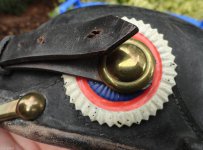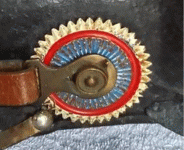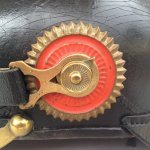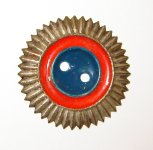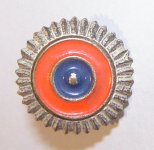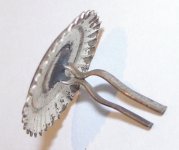CLOVIS 57
Well-known member
This post was inspired by the presentation of a Shako of the 7JB, from Westphalia, holder of the tradition of the Schaumburg hunters.
This helmet traces the military history of the principality of Schaumburg-Lippe in the late 19th and early 20th centuries.
A little history:
Until 1867, the small principality of Schaumburg-Lippe (population 50,000) only retained a single chasseur detachment with just 3 battalions; by agreement, on 30 June 67, the chasseur detachment was disbanded. The natives and recruits from this small state were then absorbed into either JR55 IIIB (6th Westphalia) or the Westphalian JB7. From 1867 to 1897 (22 March 1897), the blue-red-white Schaumburg roundel was worn on the left of the spiked helmet of the III/55JR, the Schaumburg natives. From 22 March 1897, the blue-red-white roundel disappeared from the III/55JR. The Schaumburg colours remained only on the Feldzeichen of the Westphalian JB7.
Now we come to my helmet:
An M95/97 brass Landkokarde from Lippe-Detmodt, with the red centre on the left and the Reichskokarde on the right.
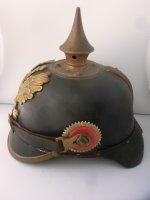
Well marked 55JR IIIB. and dated 1896 and 1914 ! Found with its beautiful Lippe-Detmodt roundel in its mobilisation configuration.
Except that one day, on closer inspection, I noticed that the red and gold brass roundel was hiding another one underneath: Bingo, the one from Schaumburg-Lippe!
A chauvinist from that little state, no doubt. This configuration, with its tricolour roundel, corresponds to 1896, when the III/55R brought together the natives of Schaumburg.
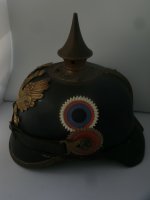
And it's these beautiful marks that corroborate the history of the Schaumburg-Lippe spiked helmet.
55JR IIIB 1996 (Schaumburg blue-red-white roundel)
1914 (Lippe-Detmodt roundel).
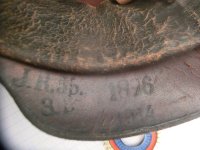
What a novel when you know how to make a spiked helmet talk.
This helmet traces the military history of the principality of Schaumburg-Lippe in the late 19th and early 20th centuries.
A little history:
Until 1867, the small principality of Schaumburg-Lippe (population 50,000) only retained a single chasseur detachment with just 3 battalions; by agreement, on 30 June 67, the chasseur detachment was disbanded. The natives and recruits from this small state were then absorbed into either JR55 IIIB (6th Westphalia) or the Westphalian JB7. From 1867 to 1897 (22 March 1897), the blue-red-white Schaumburg roundel was worn on the left of the spiked helmet of the III/55JR, the Schaumburg natives. From 22 March 1897, the blue-red-white roundel disappeared from the III/55JR. The Schaumburg colours remained only on the Feldzeichen of the Westphalian JB7.
Now we come to my helmet:
An M95/97 brass Landkokarde from Lippe-Detmodt, with the red centre on the left and the Reichskokarde on the right.

Well marked 55JR IIIB. and dated 1896 and 1914 ! Found with its beautiful Lippe-Detmodt roundel in its mobilisation configuration.
Except that one day, on closer inspection, I noticed that the red and gold brass roundel was hiding another one underneath: Bingo, the one from Schaumburg-Lippe!
A chauvinist from that little state, no doubt. This configuration, with its tricolour roundel, corresponds to 1896, when the III/55R brought together the natives of Schaumburg.

And it's these beautiful marks that corroborate the history of the Schaumburg-Lippe spiked helmet.
55JR IIIB 1996 (Schaumburg blue-red-white roundel)
1914 (Lippe-Detmodt roundel).

What a novel when you know how to make a spiked helmet talk.
Last edited:

